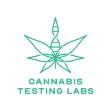Washington, DC – PRESS RELEASE: Members of the US House of Representatives voted Dec. 9 in favor of HR 3797: The Medical Marijuana Research Act, which facilitates clinical cannabis research by establishing a process so that authorized scientists may access flowers and other products manufactured in accordance with state-approved marijuana programs. It also ends the decades-long monopoly on the cultivation of cannabis for FDA-approved research by requiring federal agencies to license multiple manufacturers in addition to the University of Mississippi. For over five decades, the University has been the only federally licensed source of research-grade marijuana in the United States.
The Act is sponsored by Oregon Democrat Earl Blumenauer, along with several Republican co-sponsors. House members passed the Act on a voice vote.
“The cannabis laws in this country are broken, especially those that deal with research. It’s illegal everywhere in America to drive under the influence of alcohol, cannabis, or any other substance. But we do not have a good test for impairment because we can’t study it … This is insane and we need to change it,” Congressman Earl Blumenauer said today on the House floor. “At a time when there are four million registered medical cannabis patients, and many more likely self-medicate, when there are 91 percent of Americans supporting medical cannabis, it’s time to change the system. Our bill will do precisely that.”
In April, NORML provided testimony for the Federal Register advocating for many of the changes made in this Act.
NORML’s Deputy Director Paul Armentano said, “These common-sense regulatory changes are necessary and long overdue. The DEA has proven time and time again that it is not an honest broker when it comes to overseeing the cultivation of research-grade cannabis. Despite promising over four years ago to expand the pool of federal licensees permitted to provide cannabis for clinical research, the agency has steadfastly refused to do so—leaving scientists with woefully inadequate supplies of cannabis and cannabis products available for human studies.”
He added, “Further, these federally-licensed products do not represent the type or quality of cannabis products currently available in legal, statewide markets. The reality that most high-schoolers have easier access to cannabis than do our nation’s top scientists is the height of absurdity and an indictment of the current system.”
Under the existing regulatory system, there is only one federally licensed entity—the University of Mississippi—that is permitted to cultivate and to provide marijuana for use in FDA-approved clinical studies. Scientists have consistently criticized the poor quality of the University’s plants, which they say fail to accurately reflect the varieties of marijuana commercially available in the United States.
According to the federal government’s marijuana menu, scientists may currently select from no more than six varieties of pre-rolled cannabis cigarettes–none of which possess THC concentrations above 7% or CBD concentrations above 1%. Other types of cannabis-infused products, like tinctures and concentrates, are not available for clinical study.
Nonetheless, the current system does not permit scientists to access state-licensed marijuana products as part of an FDA-approved protocol.
In 2016, the U.S. Drug Enforcement Agency pledged to expand the pool of federally licensed entities permitted to grow cannabis. But, to date, the agency has failed to act on more than 30 applications before them. The Marijuana Research Act would permit an unlimited number of federally licensed entities to participate in this space.
Today’s floor vote comes on heels of the lower chamber on Friday voting in favor of the Marijuana Opportunity, Reinvestment, and Expungement (MORE) Act, HR 3884, which removes marijuana from the federal Controlled Substances Act—thereby eliminating the existing conflict between state and federal marijuana laws and providing states with the authority to establish their own cannabis laws free from undue federal interference.


